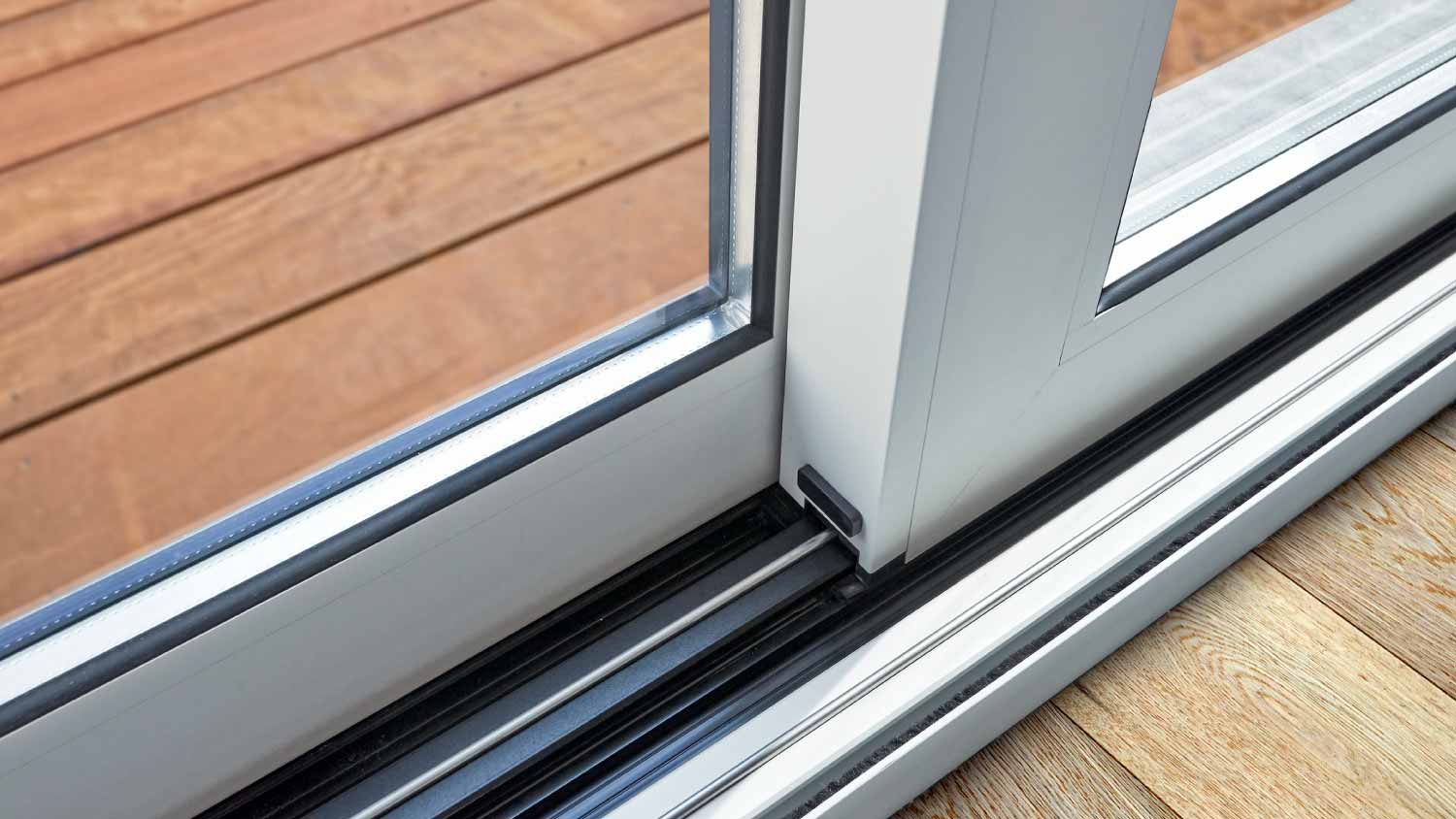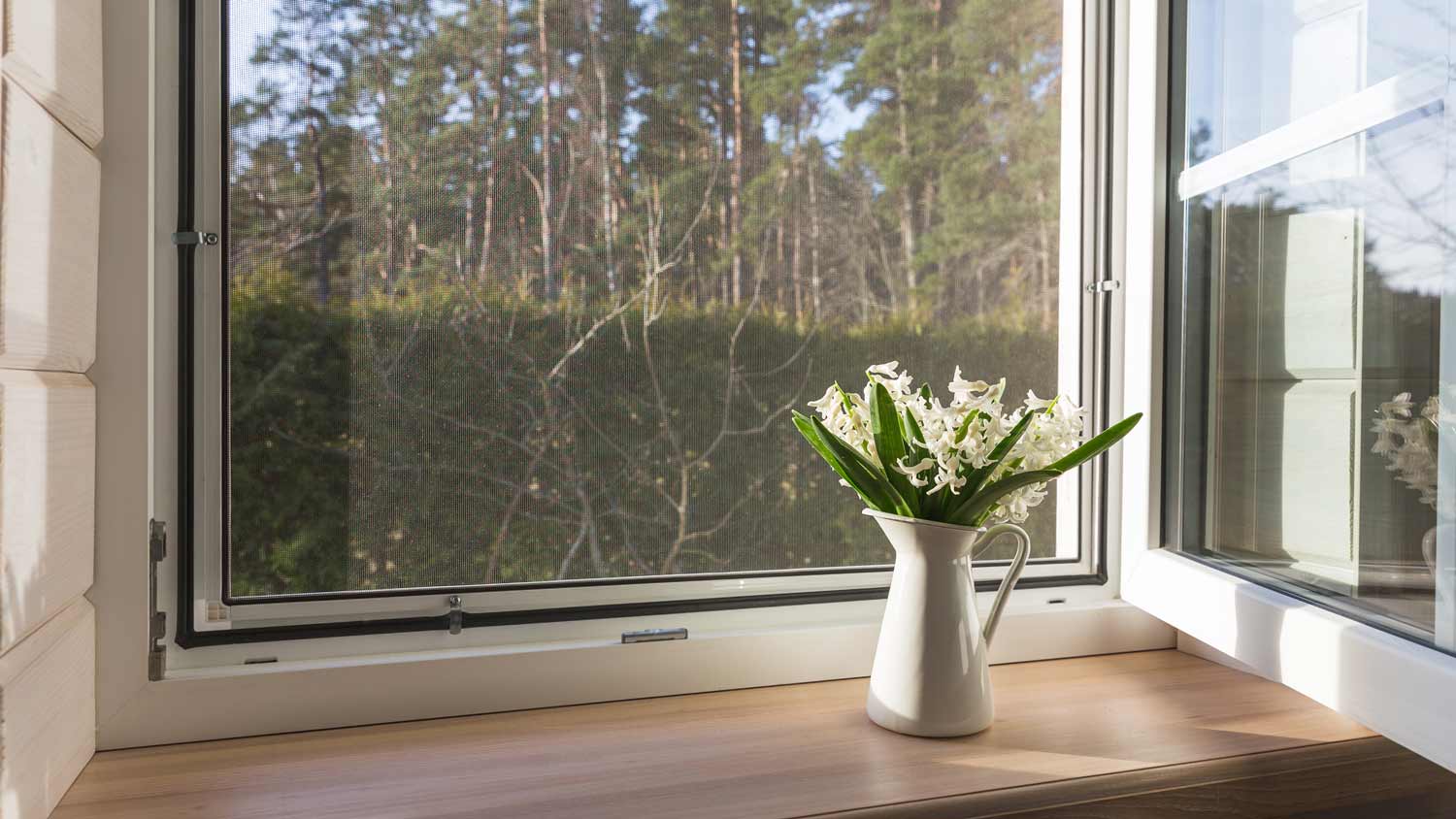Sliding Glass Door Insulation: Tips and Tricks
Check out our tips for better insulating your sliding door—and keeping the cold outside


Sliding doors are one of the best ways to enjoy a fresh spring breeze, a summer backyard barbecue, and the cool autumn air. But in the winter, sliding doors can be a nightmare for your comfort (and your utility bills) if they’re poorly insulated; heat can escape so easily! Below, we’ve assembled six tips for improving your sliding glass door insulation ahead of the long winter months.
1. Clean the Track

The easiest—and most affordable—way to insulate your sliding door is simply to clean its track. Stay on top of this routine cleaning task throughout the year. Every time you get out the vacuum to sweep the rug or the carpet, take the hose attachment over to the sliding door track and suck up all the dust, dirt, pet hair, and dead bugs that find their way into it.
How does this help? Keeping the track clear lets the door seal optimally. When it’s not perfectly sealed, you’ll get a lot of drafts, meaning the warm air will slip out, and you’re left with a chilly room.
2. Hang Thermal Curtains
If your sliding door has only blinds or a thin curtain, head to a home goods store or shop online to purchase a thick, thermal curtain. Heavy, insulated curtains do a great job of keeping the cold out—but just keep in mind they will also keep the sun out.
Open the curtains if the sliding door receives bright, direct sunlight during the day; the sun can do wonders for heating up a room. But on cloudy days or whenever the sun isn’t beaming in, close the curtains to trap in the heat.
The best part? You won’t break the bank on this sliding glass door insulation DIY. Thermal curtains cost as little as $20.
3. Apply a Window Film

You can find plastic window film insulation kits at most hardware stores and big-box retailers for under $10. While it might not look pretty when installed, plastic film acts almost like a storm window for your sliding door—an extra layer of plastic insulation keeping the warm air inside.
Besides, you can simply close your new thermal curtains over the plastic when you have company over if you don’t want them to see the film.
Plastic film certainly isn’t the best type of insulation for your home, but it’s ideal for large sliding doors and drafty windows.
4. Caulk the Door
Caulking is one the most affordable home improvement steps you can take to dramatically decrease your utility bills—and not just around your sliding door. According to the Department of Energy, sealing air leaks around the whole house with caulk costs between $3 and $30, takes 1 to 2 hours, and can increase your energy savings by up to 20%.
How does caulk insulate your sliding door? Use it to seal any gaps and cracks around the door frame. These gaps and cracks may seem tiny, but they can be a huge source of energy loss.
New to sealing air gaps? Here’s how to caulk like a pro.
5. Replace the Weather Stripping

When your sliding door was installed, it had weather stripping that sat between the door and the frame. This weather stripping is important for creating a seal to keep warm air from leaking in the winter.
Over the years, however, regular use of the door will wear down the weather stripping, especially if it was of low quality to begin with. Assess your current weather stripping, and replace it if necessary. Look for a higher-quality weather stripping that will last longer and provide better insulation.
Never tried this task before? We’ll walk you through how to replace weather stripping on a door in five easy steps. You can also hire an insulation company near you to tackle this and other insulation tasks that will make your sliding door more efficient.
6. Replace the Door
Ultimately, if your sliding door is old, is showing signs of tremendous wear and tear, and/or has only single-pane glass, it might be time for an upgrade. Installing a sliding door with dual-pane glass is a great way to increase the door’s insulation.
Start by surveying local door installation companies for quotes. On average, you can expect to spend between $1,175 and $3,975 on the cost of a new sliding door. It’s also possible to replace a sliding door on your own.
Replacing your old, drafty door can make a noticeable difference in your energy bill, but if you want to really improve your home’s heat retention in the winter, you should consider a full-on insulation project. Insulation costs between $1,075 and $2,600, but that varies by type of insulation:
Spray foam insulation costs between $1,400 and $4,150.
Blown-in insulation costs between $975 and $2,300.
Looking for more ways to retain heat this winter? Here’s how to insulate the floor in your home—and how to cut insulation on your own if you’re feeling DIY savvy.





- Why Water is Leaking Through Your Sliding Glass Door and How to Stop It
- 6 Essential Sliding Glass Door Parts and How They Work
- How to Secure a Sliding Glass Door: Full Guide
- Here’s What to Know About Standard Sliding Glass Door Sizes
- 5 Ways To Make Your Front Door Energy Efficient
- How to Insulate a Door
- 14 Different Types of Door Weather Stripping to Keep the Elements Out
- 8 Common Reasons Your Door Won’t Open (and How to Fix It)
- All the Parts of a Door: The Homeowner’s Guide
- How to Fix a Door That Sticks: 5 Different Methods















